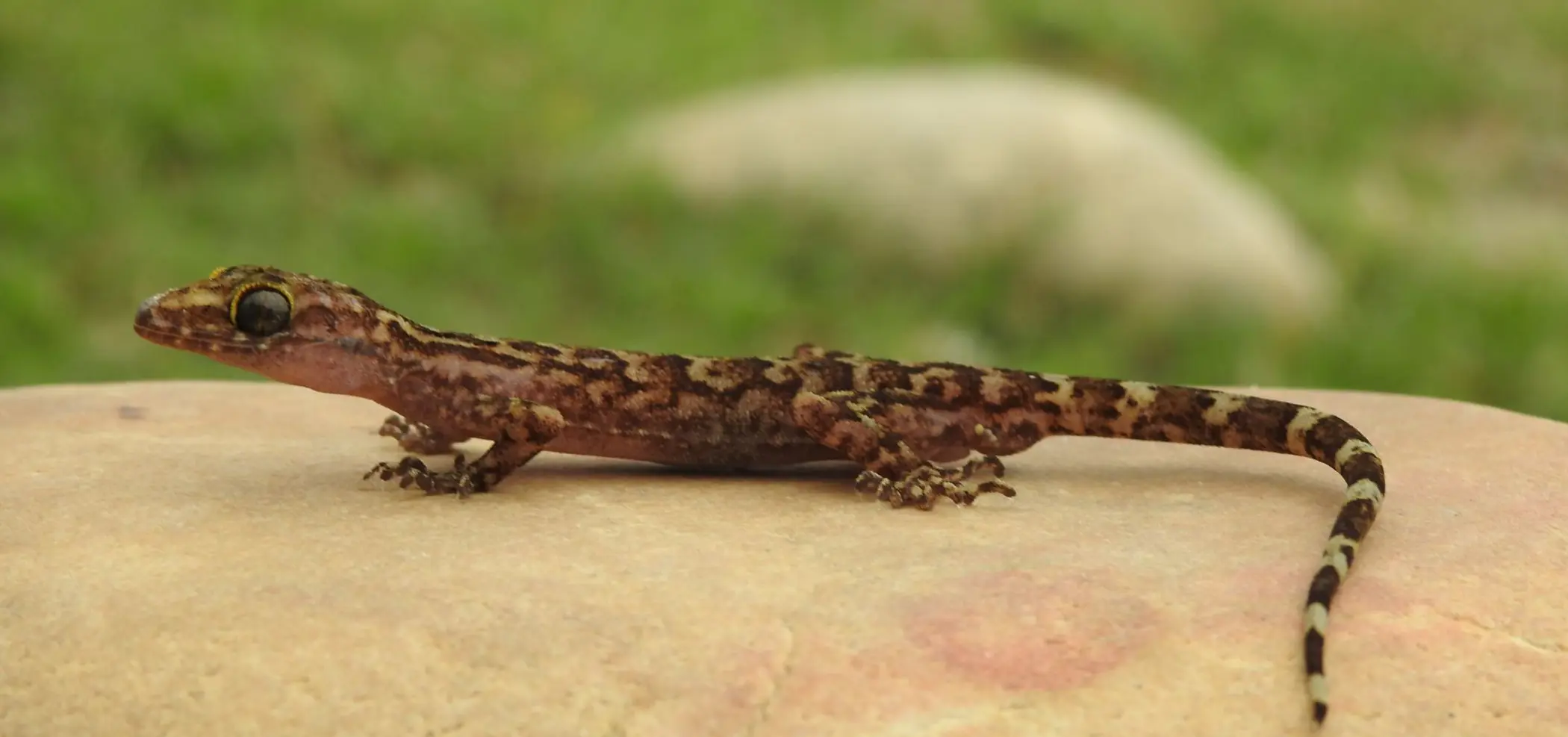Federation researchers discover two new gecko species in Nepal's Siwalik Mountains

The Chure Bent-toed Gecko is named after the Chure Mountains, the local name for the Siwalik Range. Image: Supplied
A Federation University Australia researcher has discovered two new species of gecko in the remote Siwalik Mountains of Nepal, building on a breakthrough last year that identified three previously unknown species in the same region.
The geckos were found during the June-July 2024 fieldwork of PhD candidate Santosh Bhattarai, who identified the new species on the stone walls of the ancient forts Makwanpurgadhi and Hariharpurgadhi.
The new species belong to the Bent-toed gecko group (family Gekkonidae), with their description recently published in the international journal ZooKeys.
One species, discovered in the Makwanpurgadhi area of Makwanpur District, has been named the Makwanpurgadhi Bent-toed Gecko (Cyrtodactylus makwanpurgadhiensis). It is named after Nepal's largest and historically significant fort, Makwanpurgadhi.
The second species, found in the Hariharpur area of Sindhuli District, has been named the Chure Bent-toed Gecko (Cyrtodactylus chure) after the Chure Mountains, the local name for the Siwalik Range.
Night-time surveys pinpointed the distinct body structures and colours of the new species. Subsequent genetic assessments, with colleagues from Nepal and India, confirmed the discoveries.
This discovery brings the total number of Bent-toed geckos known in Nepal to seven species. Remarkably, five of these seven have been discovered and described by Mr Bhattarai and his team.
"The Siwalik Mountain Range, often called the Chure Mountains, is the youngest and most geologically fragile part of the Himalayas — it's a truly unique region," Mr Bhattarai said.
"These new finds emphasise that the area is an unexplored hotspot for biodiversity and highlight the urgent need for enhanced scientific exploration and conservation initiatives in this landscape."
Currently, only two of Nepal's seven Bent-toed gecko species are found within protected areas, meaning the remaining five — including three of the team's discoveries — are found outside protected landscapes.
Mr Bhattarai's work underscores the need for a shift in conservation focus. Historically, efforts in Nepal have centred on large mammals, leaving many reptiles and amphibians poorly studied.
"Our work shows that conservation must move beyond large animals to prioritise research and protection for lesser-known groups like reptiles," he said.
Professor Wendy Wright, Mr Bhattarai's PhD supervisor and Dean of Graduate Studies at Federation University, says the discovery is a great example of the groundbreaking work undertaken by research students in Federation’s PhD and Master of Philosophy programs.
“The depth, diversity and quality of our higher degree by research students is amazing,” she said.
“Many of our research students are strongly connected to the community and to industry partners, so their research projects are meaningful and truly make a difference in the world.”
Mr Bhattarai's PhD work was supported by a Destination Australia Award and a Research Excellence Scholarship from Federation University Australia, as well as by the Katie Adamson Conservation Fund (USA), the Rufford Foundation (UK), and Auckland Zoo (New Zealand).
